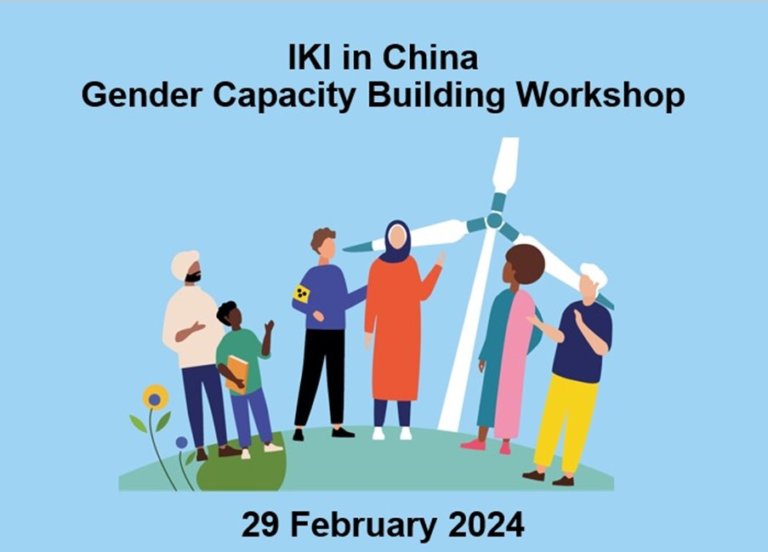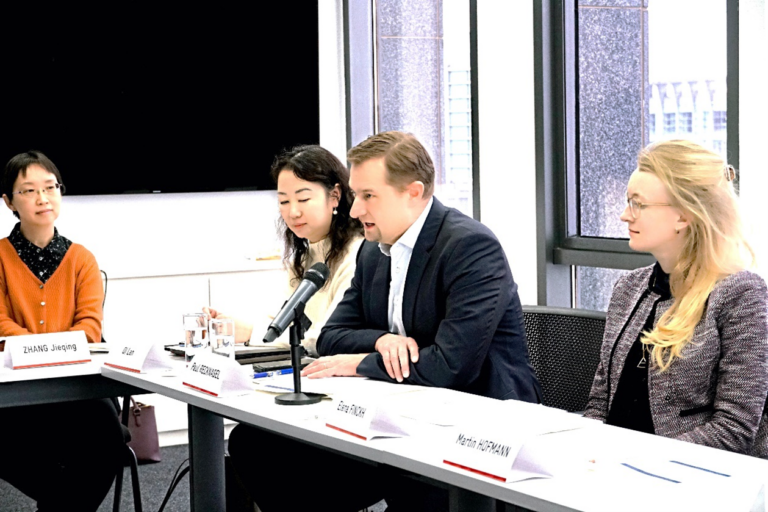On September 27, 2022 a cement workshop facilitating knowledge and experience exchange between Germany and China was held. Mr. Steffen Menzel Project Director of the Sino-German Cooperation on Climate Change – NDC Implementation Project opening the workshop with his introductory remarks and a brief introduction of the participants. This was followed by a Quantitative analysis of future carbon emissions of cement sector by expert from Chinese side. The final presentation in the workshop involved a potential research area, a follow-up from previous exchange by German consortium experts. The workshop concluded with remarks by Dr. ZHANG Shiyi, National Center for Climate Change Strategy and International Cooperation (NCSC), with the next steps being the German and Chinese partners agreeing to work together on a report which will cover all of the five cooperation categories.

The cement industry is a key factor in China’s transition to carbon neutrality. China’s cement production and consumption account for more than half of the respective global totals, and its cement carbon emissions are the third largest in the country, after those of power and steel, accounting for about 13% of the country’s total carbon emissions.
The main challenges that lie ahead are the large-scale substitution of raw materials and ingredients using transformational technologies; switching from coal to low-carbon energy sources; the risk of stranded assets is high in a rapid transition, given the young assets of the industry amongst others.
The solutions to these challenges include but are not limited to reducing demand which is likely to decline in China because of slowing urbanization, weakening construction, phasing out of substandard production capacity, and improvements in building material efficiency. The other solution is fuel switching which expounds on alternative fuels (solid waste, biofuel, hydrogen, electricity) which will play an important role in reducing emissions, and some technologies are already showing early applications. Changing the cement chemistry by reducing the clinker-cement ratio, developing new low-carbon cements, and switching raw materials will also be helpful along with an improvement in energy efficiency clinker calcination, the grinding system, and digitalization. Lastly, Carbon capture, utilization, and storage (CCUS) could provide end treatment of the remaining carbon emissions; the location of storage options could influence the industry’s future geographical distribution.
The outlook on supply and demand is a pertinent point to consider. In the next decades, the slowdown of urbanization and infrastructure build-outwill dominate cement demand trends. By 2050, China’s cement clinker demand is likely to fall by two-thirds from current levels due to rational urban planning, optimization of building structure and recycling of construction waste amongst other factors. On the supply side in the short term, the elimination of backward and excess capacity is the main approach to emissions reduction in the industry, helping the industry to peak its carbon emissions as soon as possible. With the promotion of supply-side reform, the normalisation of policies such as environmental protection, staggered production, as well as the carbon market under the double carbon target, will combine forces to promote the cement industry to low carbon transformation. As for the future, with the industrial restructuring, increasing pressure on environmental protection, increasing personnel costs and other factors, China’s cement clinker import scale does not exclude the possibility of further expansion.
The development of alternative fuels in China’s cement industry is relatively laggard. Waste co-processing, which is a precursor of fuel substitution by waste-derived fuels, is the most frequently adopted technology. At present, the thermal substitution rate in cement production is less than 2% in China, compared with rates of over 50% in other countries, leaving a large space for improvement. To promote solid waste fuel substitution, the market positioning of waste fuels, pre-treatment technology, cement quality control and market acceptance must be addressed.
At present, the energy consumption per ton of clinker in China is between 2.6 and 4.0 gigajoules (GJ), which is equal to or better than the average in Europe and the United States. However, there are still some substandard producers that cannot meet the national standard and are in urgent need of technical improvement. If the overall clinker energy consumption of cement production lines across the country can be upgraded from the current Level 3 to Level 1, it would be equivalent to reducing energy consumption and emissions by about 14%.
When it comes to changing cement composition and chemistry of new low-carbon clinkers — which are not based on calcium silicate and feature low calcium oxide (CaO) content, a low calcination temperature, and low carbon emissions — are expected to occupy a higher market share in the future. As the technology matures and the scale effect unfolds, CCUS is primed to become one of the core technologies to achieve carbon neutrality in the cement industry. China’s cement industry is well placed to be integrated into the national carbon trading market because of its good carbon data collection and accounting. Carbon price will play an important role in accelerating the industry’s transition and making zero-carbon cement cost advantageous.
The roadmap for transition is as follows –
- Until 2030: demand reduction & efficiency improvement. The technology and standards of solid-waste fuels will gradually be established and improved. Clean electricity will account for about 40%, about 5% of the emissions could be captured.
- 2030–40: demand reduction, alternative fuels, and CCUS. Standardization and commercialization of solid-waste fuels will be established. Clean electricity will account for about 55%, about 10% of the emissions could be captured.
- 2040–50: alternative fuels and CCUS. With the carbon pricing mechanism, zero-carbon cement will show a cost advantage. About half of the fuel for calcination will be provided by sustainable energy sources, about 30% of the emissions could be captured.
- 2050–60: new alternative production technologies, such as hydrogen and green electricity, will mature and become commercialized. The industry-wide fuel substitution rate will reach 70%, and 90% of CO₂ will be captured. Total CO₂ emissions from the industry, and the carbon intensity of cement products, will be close to net zero.
At the moment, increasing equipment and energy efficiency are the main methods used in the business to reduce carbon emissions.1 These strategies won’t likely reach net-zero emissions using just current technologies, despite the fact that they can reduce emissions to some extent in the short future. A multifaceted strategy is needed to decarbonize the cement industry, including lowering cement consumption, creating low-carbon cement varieties, increasing the use of low-carbon energy sources to replace fossil fuels and electricity, and promoting CCUS technology to reduce process emissions.2
The correct institutions are necessary for the net-zero transition in the cement industry. Cost advantages for low-carbon cement can be guaranteed by pricing mechanisms like carbon pricing. The upstream and downstream sectors of the cement business are interconnected, particularly the construction, concrete, and fuel sectors.
China is currently at the forefront of international energy efficiency in cement production and has the experience and capacity to innovate and apply new technologies. The development of hydrogen energy is also included in national planning. These factors will create favorable conditions in terms of technology and cost for the application of new energy in the transformation of the cement industry. The downstream cement industry, represented by the construction industry, continues to deepen green transformation and raise low-carbon standards, which will benefit the low-carbon transformation of the building materials industry represented by cement and help foster a growing market demand for low-carbon building materials adding to a positive outlook on achieving the country’s net zero goal for this industry.



